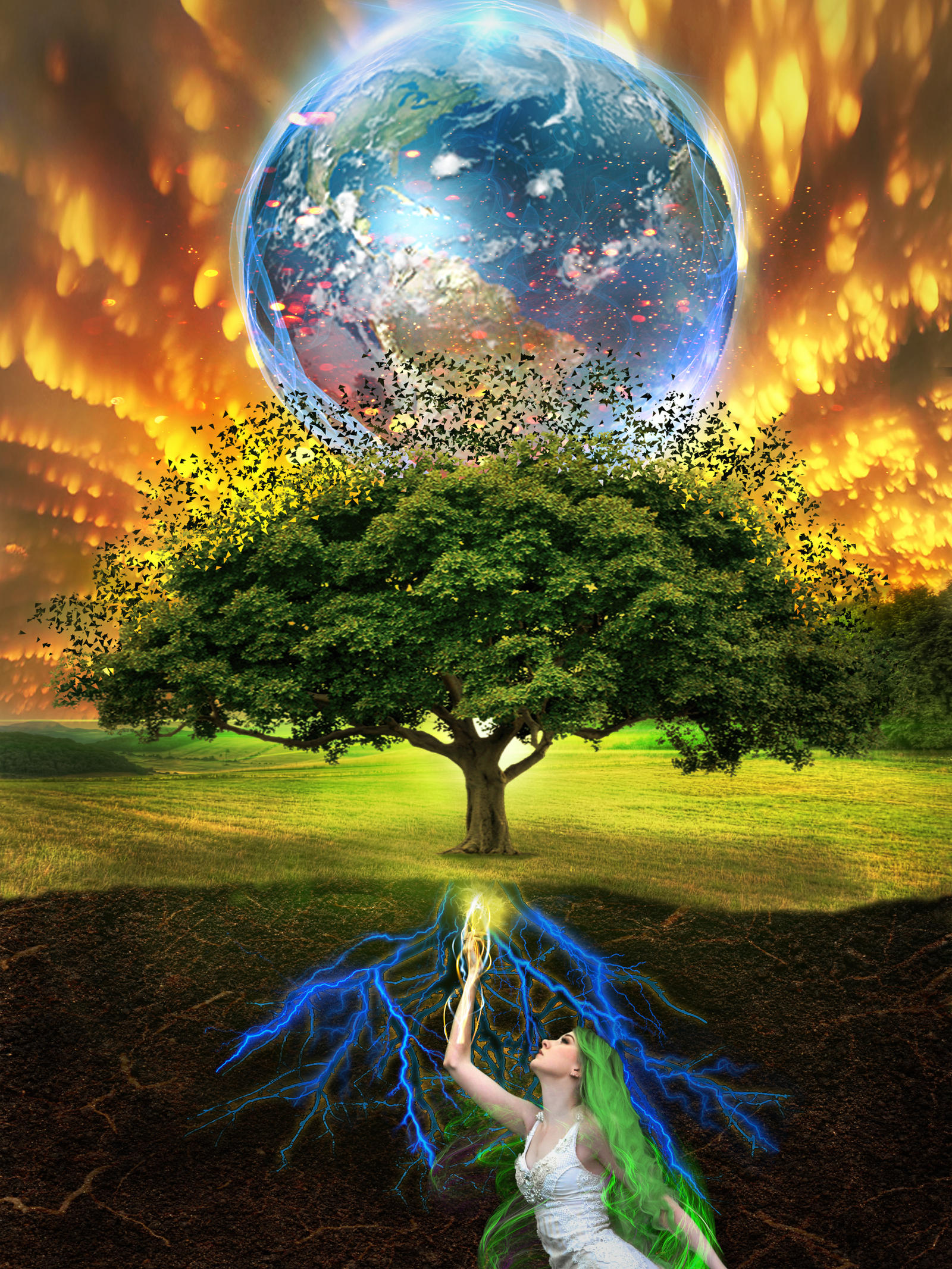Trees have played a significant part in many of the world's religions, as well as mythologies and philosophies, and have been given various sacred meanings throughout the ages of mankind.
From Bereishit to Divrei HaYamim II in the Tanakh (Jewish Bible) and from Genesis to Revelation in the Christian Bible, the mention of trees are scattered throughout these ancient tomes. Trees are alluded to long before the creation of mankind and the trees in the Garden of Eden held a supreme importance, more than all other trees duly noted in the Holy Books.
Tree of Life
 The Tree of Life was one of two trees mentioned in the Book of Genesis as being located in the Garden of Eden. Not a lot of information is given about this tree other than the fact that it was sacred. The concept of a "tree of life" has been used in religion, philosophy and mythology. It suggests an interconnection of all life form on our planet and presented as a metaphor for common descent in the evolutionary sense.
The Tree of Life was one of two trees mentioned in the Book of Genesis as being located in the Garden of Eden. Not a lot of information is given about this tree other than the fact that it was sacred. The concept of a "tree of life" has been used in religion, philosophy and mythology. It suggests an interconnection of all life form on our planet and presented as a metaphor for common descent in the evolutionary sense. To the Ancient Egyptians, the Tree of Life represented the hierarchical chain of events that brought every thing into existence. The spheres of the Tree of Life demonstrate the order, process, and method of creation.
Christians view the tree as representing the immaculate state of humanity free from corruption and sin [before the "fall of mankind"]. In Judaism the 'tree' is associated with wisdom and calmness (Mishlei/Proverbs 3:13-18; 15:4). The non-canonical Book of Enoch states that in the time of the great judgment, God will give all those whose names are in the Book of Life fruit to eat from the Tree of Life. And, in Islamic literature the tree is referred to as the "Tree of Immortality", as alluded to in the Qur'an, Hadiths and Tafsir. However, unlike the biblical account [of the Christian], the Qur'an mentions only one tree in Eden which Allah specifically forbade Adam and Eve to eat from.
From figuratively being applied to the Torah itself to the Quranic symbolism of Adam disobeying Allah by eating from the sacred tree to the Christians ideology of the tree representing the "perfect man", the Tree of Life connects all three Abrahamic religions through its sacred branches.
"Blessed are they that do his commandments, that they may have right to the tree of life, and may enter in through the gates into the city."~ Revelation 22:14
Tree of Knowledge of Good and Evil
In Christian theology, eating the fruit of the Tree of Knowledge of Good and Evil was the original sin committed by Adam and Eve that subsequently became known as the "Fall of Man" in Genesis 2-3.
In Catholicism, Augustine of Hippo taught that the sacred tree should be understood both symbolically and figuratively - similarly to Jerusalem being both a real city and a figure of Heavenly Jerusalem. Augustine underlined that the fruits of that tree were not evil by themselves, because everything that God created was good (Genesis 1:12). Instead, it was the disobedience of Adam and Eve, who had been told by the Creator not to eat from this particular tree (Genesis 2:17), which caused disorder in the order of creation, which resulted in humanity inheriting sin and guilt from Adam and Eve's transgression.
The Qur'an does not literally name this tree in its holy scriptures. It is only referred to as "the tree". Muslims believe that when Allah created Adam and Eve, He told them that they could enjoy everything in the Garden except for this certain tree. Then Satan appeared to them and told them that the only reason Allah forbade them to eat from that tree is that they would become Angels [or become immortals]. Adam and Eve were deceived and thus proceeded to eat the fruit.
"And out of the ground made the Lord God to grow every tree that is pleasant to the sight, and good for food; the tree of life also in the midst of the garden, and the tree of knowledge of good and evil." ~ Genesis (Bereishit) 2:9
The Tree of Life and the Tree of Knowledge of Good and Evil are immortalized in many cultural mythologies around the world. Human beings, observing the growth and death of trees and the annual death and revival of their foliage, have often seen them as powerful symbols of growth, death and rebirth. Evergreen trees, which predominately stay green throughout these cycles, are sometimes considered symbols of the eternal, immortality or fertility.
"Jesus continued, "Blessed is he who came into being before he came into being. If you become my disciples and listen to my words, these stones will minister to you. For there are five trees for you in Paradise which remain undisturbed summer and winter and whose leaves do not fall. Whoever becomes acquainted with them will not experience death." ~ Gospel of Judas 1:5
Who is the artist of the tree of life pic you used.
ReplyDelete